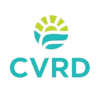By Peter Rusland, Cowichan News Leader Pictorial, April 19, 2013
 Rescue plans for Cowichan River’s threatened chinook salmon, and their habitat, lie in gaining local control from Victoria of the waterway’s ecosystem, local stewards explain.
Rescue plans for Cowichan River’s threatened chinook salmon, and their habitat, lie in gaining local control from Victoria of the waterway’s ecosystem, local stewards explain.
Reasons for requesting that control, and tactics to save the heritage Cowichan’s habitat, are expected to surface at today’s salmon session — stocked with government experts, plus valley stewards and leaders — at Duncan’s Travelodge Silver Bridge Inn.
“It’s ‘If you can’t get there from here, how do we make a map to get there?’” local Paul Rickard of the B.C. Wildlife Federation said of today’s invitation-only habitat huddle.
One Cowichan stakeholder Parker Jefferson noted legislative control is key.
“The whole decision approach in our watershed should be made locally,” he said.
Fishheads of all stripes will discuss findings of a landmark, detailed report netted during a March 4 to 5 Cowichan Chinook Workshop, a gathering of 25 Cowichan fish experts mulling everything affecting the river, and stunting its chinook production.
Those local, provincial and federal experts — perhaps the biggest-ever local gathering of its type — detailed the risks in chinook adult migration, spawning and egg-to-smolt processes.
“What goes for chinook befits all fish in the Cowichan River,” said Rickard.
He cited a “cascading effect” of factors that saw 500 naturally spawning Cowichan chinook rise to 3,000 during the past seven years.
“It’s plateaued there; why have they hit a roadblock?” he asked.
Experts concluded the lower river and estuary are most at risk — and the biggest bottleneck to chinook production.
For adults, the greatest danger is the migration barrier from low water in the early fall — evidenced by last September’s drought crisis — plus gravel build-up causing high risks of seal gobbling, and stress-induced loss of spawning capacity.
Juvenile chinooks’ greatest threat, the report says, is loss of off-channel habitat and main-channel areas for rearing, plus limited quality estuary habitat.
Today’s meeting happens while Bryan Symonds, of B.C.’s forests and lands ministry, decides if local stewards, Natives, and leaders should gain control of Cowichan River’s flows to store water in case of drought.
To Rickard and Jefferson, the answer’s a no-brainer.
“It looks like we need a one-stop shopping place,” Rickard said of the workshop’s drive for a local watershed-management board.
That goal will include all Cowichanians.
“People are aware of what happened last fall,” said Jefferson, “so we’re extending that to explain how significant chinook salmon are as an indicator species about the health of the river, and our whole watershed.”
He also wanted election candidates’ ideas about shifting the river’s governmental control to Cowichan’s watershed board.
“This could be seen as a pilot project.
“Let’s see if this community can actually take care of its own watershed.”
Areas at risk
The Cowichan Chinook Workshop report cites ‘very high’ risk for Cowichan’s fall run of chinook in the following categories:
• Safe habitat in the estuary and lower river for spawning adult salmon
• Keeping stable channels open and ensuring natural levels of sediment
• Adequate flows for upstream migration, safe passage with adequate refuge habitat, and unrestricted migration to mainstream and off-channel habitat
• Unrestricted migration and passage in the mainstream and off-channel habitat for smolts
• Egg incubation rearing habitat with good instream complexity
• Suspended sediment levels
• High-quality rearing habitat and complexity
 Email
Email



